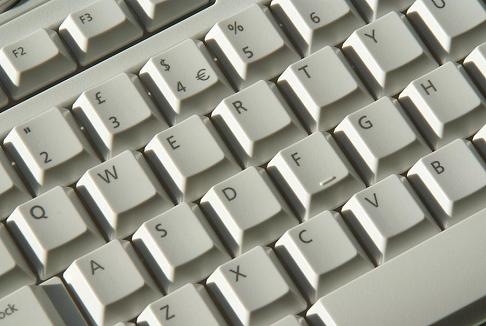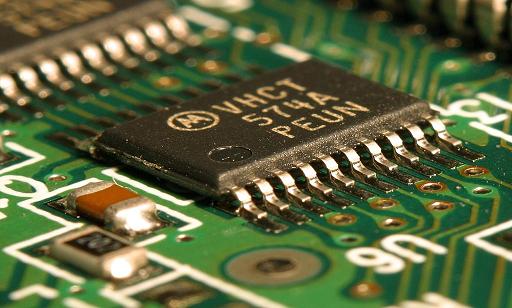|
BACK | Key Success Factors | IT for Business | people issues in IT | other articles on IT | Download articles |
| Read Comments Copyright © Prem Kamble 2009 Submit Comments | |||||||||
|
WHAT TOP EXECUTIVES NEED TO KNOW ABOUT COMPUTERS by Prem Kamble |
|||||||||
|
1. EXISTING SCENARIO - TURMOIL OF THE INFORMATION REVOLUTION 2. THE BACKGROUND AND THE LEGACY
3. WHERE WE WENT WRONG - TWO MYTHS ABOUT COMPUTERS 4. MYTH - COMPUTER IS A SUPERIOR MACHINE
5. MYTH - COMPUTER IS A VERSATILE MACHINE
6. SOFTWARE A NEW PARADIGM - WHY SOFTWARE IS NOT REALLY A "MACHINE"
7. FLEXIBILITY OF SOFTWARE 'MACHINE' - THE DOUBLE-EDGED SWORD
8. DEMANDS OF THE NEW SOFTWARE PARADIGM 9. CONCLUSION
|
|||||||||
| copyright © 2009 Prem Kamble | |||||||||
|
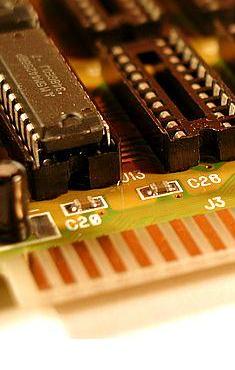
|
Computers are proliferating business organizations and entering every walk of our life. But a closer look will reveal that man is still not at ease with this device. He is perplexed, foxed, fidgety and sometimes angry while dealing with this creature.
Though the computerization scenario around us may look very euphoric, if we peep into what is happening in most of the companies trying to automate processes using computers, it will be evident that deep inside, this technology is still foreign to us.
It is not uncommon to have computerized application systems shelved simply because the people for whom the application was built or configured do not accept it, or are not too keen to use it. The same people who seem very enthusiastic when they first view the system, seem to have cold feet and seem disinterested when it comes to putting it to actual use. "This system just does not meet my requirements. This is just not the way I wanted it. You have not understood my requirements." These are familiar words that most systems professionals have heard from the users of computerized systems. Most systems look nice when viewed as a demo, but fail miserably when implemented.
The reasons can be many: the requirements were not given or understood properly, the information requirements were drafted without serious thoughts, the system needs to be modified to meet the new requirements and the IT personnel need more time to modify the system, and so on... Whatever be the reasons, the gap between the IT personnel and the end user, or the computer technology and the consumers of this technology is very evident.
Why aren't computers having a smooth entry into the minds and lives of human beings? Why this confusion? Why this problem of acceptance of computers after years of introduction of this technology?
The situation is not so only in developing countries, it is so even in developed countries as the problem relates to the human species as a whole. It is a problem of the evolution of human psychology.
There are two very basic problems in our perception of computers. We have made fundamental mistakes while understanding computers due to which, however hard we try to be at ease with them, we find ourselves jittery and confused.
Our mental make up which has been shaped and groomed in the machine age is unable to adjust itself in an age of computers. The very concepts of machines that have been shaped and developed in the machine age, fail miserably when applied to computers. There is a very subtle difference in the way we should look at computers. When we realize this distinction, there will be a marked difference in our comprehension of computers.
What is this subtle difference that we have to see? How should a manager now look at computers and how should he change his outlook in order to see computers in the right perspective? We shall try to find answers to these questions in the following paragraphs.
First Let us look at some historical and psychological reasons for this state of affairs.
2. THE BACKGROUND AND THE LEGACY
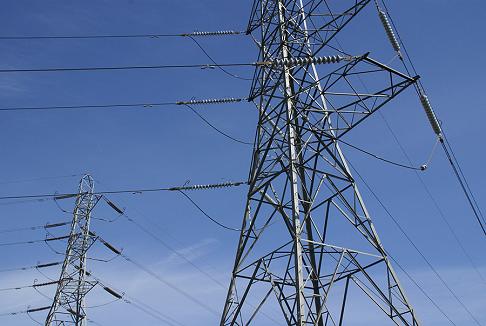
2.1 Machine Culture of the Industrial Revolution
For a long time, man was accustomed to doing things manually both at home and at work. With the onslaught of machines came the Industrial Revolution. The industry changed and these changes brought with them their own cultural shocks. The turmoil of Industrial Revolution cannot be forgotten. Machines changed the work culture, changed everybody's jobs, increased the scale of operations and created need for organizational restructure and overhaul.
Man took considerable time to adapt to the industrial culture. The idea of work being performed by machines several times faster was both exhilarating and depressing - depressing due to the changes in the work culture. As centuries passed by, machines and mechanical thinking slowly started seeping into man's mind-set. Slowly, man got used to the industrial and machine culture. He went through the pains and emerged victorious. It took generations for man but finally he succeeded in evolving a new industrial culture. A new era dawned over mankind and man had mastered the change.

While man was evolving to the industrial psychology and to the automation culture of speed, machines too were evolving. Initially there were mainly mechanical machines. Then came electrical machines and finally the electronic ones.
Then came computers. As the industrial culture was deeply ingrained into his mental makeup (or mind-set), he thought that the computer was just another machine. Armed with his centuries old knowledge and the experience of handling the change brought about by introduction of machines, he went about adopting the same old approach to deal with the introduction of computers. He thought it was just another electronic machine.
What he did not realize was that it was not just the introduction of one more new electronic machine, but a dawn of a new era altogether, a change from the industrial era to the information era. He did not realize that just as Industrial era required a new culture, new thinking and new approach, Information era also demanded that he gave up old ideas and methods and adopted new ones to deal with computers and computerization.
2.2 Confusion Caused by the New 'Machine' Computer
Just as man was adapting to the machines of the machine age, there arrived on the scene this new 'machine' called computer to confuse him.
Man soon started to see some differences in the two machines. Whereas the old machine always did the same task, this electronic machine seemed capable of doing almost anything. Somewhere it was maintaining accounts, somewhere preparing salaries and somewhere else controlling the factory. He had seen one machine perform one type of task. For instance, a car did the motor task. This new electronic machine could perform multiple tasks. Two computers looking exactly alike were actually doing completely different tasks.
There was something bewildering too about the computers. The machine did mechanical tasks which were clearly understood. You could see something happening before your eyes, as there were physical moving parts. On the other hand, computers had no moving parts. Something seemed to happen inside and yet it delivered wonders.
This new machine created by man was certainly very versatile, he thought. Man by now was immensely satisfied with machines, since they did simple mechanical tasks much better than humans. So expectations on computers, the new electronic machine, rose sky high. After all, computers were perceived as much versatile machines. The new machine would obviously cross all boundaries of human satisfaction, he thought. Man had seen computers do so many different tasks that he expected them to satisfy any and all his fancies.
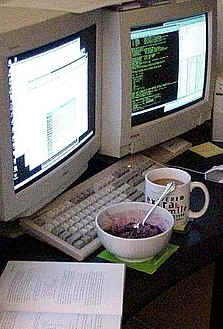
|
Expectations show clearly in businesses where people expect computers to do wonders. A manager expects the computer to satisfy his requirements immediately as he has seen so many computers do almost anything, He expects computers to satisfy all his needs and he expects quick results. Moreover, as his business needs change, he changes his processes on the fly and expects the computerized solution to instantly follow suit.
But reality was unfortunately different. To his utter disbelief, he found nothing happening although the computers were in place. ("It's been ages since we brought in the automated solutions but things have not really changed"). He was surprised that his requirements were not being immediately addressed by computers. When he asked for a business process change, he was surprised that it could not be done so quickly. His ire showed on the technology folks. "Why can't they understand my needs and my dynamic environment?" was his reaction.
When everything in the office was being done manually, the manager was so used to changing methods by simply instructing his clerk to do it in a different way. Since habits die hard, the manager did not change his habits and suddenly told the IT folks to change the business process and would expect things to change immediately, just as he used to expect from his clerk in the manual system. When the IT department could not react so quickly to his changed need as his faithful clerk used to, he found it unacceptable.
The initial awe and respect for computers soon turned into bewilderment, frustration and finally disillusionment.
This was different from what he had experienced in the industrial age. The frustration is evident in offices. When computers do not give exactly what you need, when IT folks do not understand, they seem to be totally incompetent to deliver. They cannot change the system immediately when you change your ways, and they ask too many awkward questions! The computer people seem to expect too much from you.
You say, "Why do you guys (the so-called experts of the new versatile machine) expect so much from me when the old machines never demanded so much? I have been using other equipments like telephone, or an aircraft - and they never make so many demands from me. An aircraft serves me so well but never expects me to learn the internals of the aircraft, nor to learn to fly the aircraft myself. I don't change my ways to use the aircraft. But the IT folks want me to change my ways and learn to use the computer."
We shall see later the big fallacy in the above statement, but it shows that the frustration is real.
3. WHERE WE WENT WRONG - TWO MYTHS ABOUT COMPUTERS
Technology changes very fast but it takes generations for man to change his basic outlook. The main problem of acceptance of computers today is historical, psychological and cultural. We haven't changed our outlook from the machine age to the age of computers. We have now got so much used to the machines of the industrial age that we look at computers too as just another machine.
One may ask, "What is wrong if we look at a computer as an electronic machine?" There lies the biggest problem. The basic mistake we make is that we look at computer too as a machine of the machine age, and expect similar results. We approach computers as we would approach any other machine.
We make some very basic mistakes when we look at the computer as a machine. All the disillusionment, confusion etc. is a result of two misconceptions or myths about computers.
The following are two computer myths which are the root cause of most of the confusion.
1. Computer is not a superior machine. In fact it is far inferior to the machine age machines
2. Computer is not a Versatile Machine. In fact, strictly speaking, it is not a machine. We should not apply our machine age concepts of a machine to computers.
The following three statements, I am sure, will initially add to the confusion. But trust me, as you read further and have a little patience, they will make more sense.
1. Computer is not really a superior machine. In fact if you compare it with the machines of industrial age, it is far, far inferior. If we look at their respective roles in terms of the human functions that they automate, the machines are far superior to the computers.
2. Computer is not the versatile machine as we have labeled it. The real "machine" which gives us the desired results is the software or the application program running inside. Computer is only the fuel running the "software machine". Software gives the versatile image to the computer.
3. To add further to the confusion, software is also not really a machine, as it very different from the machine of the industrial age that we know. We shall soon see how Software is a new paradigm, and addressing it with a machine-age mindset is the third big mistake.
The root cause of the confusion is that we did not notice the paradigm change. We made the first mistake when we looked at the computer as not only a machine, but as a far superior machine. Even if we were to correct our perception and see the software as the real machine, we would still be erring (as we will see). So there is a need to unlearn the industrial culture that is so deeply ingrained into our psyche and look at software as a new paradigm.
Let us look at each of these myths.
4. MYTH - COMPUTER IS A SUPERIOR MACHINE
4.1 Machine Automates our Physical Tasks, Computer Automates our Mental Chores
 |
We think that the computer is very versatile and far superior when compared to other machines of the machine age. Since we are immensely satisfied with the machines, we expect bigger miracles and more satisfaction from computers. This is where lies our biggest folly. With such high expectations, naturally there is more frustration. Actually, the computer is far inferior when compared to a machine. This may sound hard to believe, but we shall soon see how this is true. The fact is that the machine-age machines are far superior to man and computers far inferior to man when it comes to the respective functions of man that they substitute. Whereas the machine is clearly superior to man with respect to the physical functions that it automates, the computer falls far short of man and his brain in the mental functions which it attempts to simulate.
The normal machine of the machine age attempts to automate operations which man would have to do by physical labor. Machines serve our physical needs - they reduce our physical strain. Machines automate physical functions of man. A car does something which our legs would be doing otherwise. A lathe does the work of our hands.
A machine does the physical task several times faster and better than humans can do it. It is much faster, untiring and far more accurate than man. The machines have a clear edge over humans and we are immensely satisfied with the results. Machines are clear winners.
4.2 Computer is Far Inferior to the Machine-Age Machine
On the other hand, a computer attempts to automate our mental activities and reduce our intellectual work. It tries to automate the functions of our brain, but falls miserably short of the human brain. Although the Computer does the calculations more accurately and much faster than the humans, it fails miserably when it comes to other mental processes like decision-making or logical thinking. The computer just cannot do the mental activity.
When there was a change in the manual work procedure in an office, all you had to do was to tell a human being and the change was affected. A human brain can quickly comprehend the changes and change the methods. Whereas in an automated process, it cannot be changed very fast. The Software machine needs to be re-configured or sometimes altered, and then it has to be thoroughly tested. The entire process is quite tedious and slow.
These are some simple facts that we have not come to terms with. The computer can post and print a thousand ledger entries in no time which a man would take days - but where a human being could detect a common sense error, the computer fails miserably. This is simply intolerable to us.
5 MYTH - COMPUTER IS A VERSATILE MACHINE
5.1 Software gives the Versatility to Computers
It is quite natural for us to believe that computers deliver some real miraculous stuff for us. But this belief can be one big source of confusion about computers What is responsible for the miracles that you see from the computers is not the computer, but the software that is running inside invisible to the human eye.
As we see the same computer perform different tasks, the computer has wrongly attained an image of being very versatile. We think it is a machine which can perform multiple tasks. What is versatile is not the computer but the software. Very often we expect instant results from the computers. But in most cases, the software has to be configured or developed to suit our requirements, tested and implemented. We do not know that the real "machine" or the software may still not be ready.
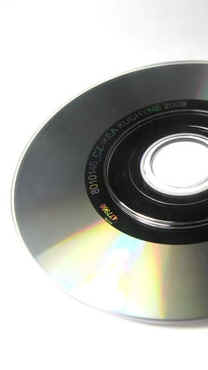 |
We are used to seeing one machine perform one task, as in a car which performs the motor task. Since we wrongly look at the computer as the machine performing our task, we get bewildered to see the same machine performing so many tasks. Somewhere it is keeping accounts, somewhere else paying your employees the salary, somewhere replacing your astrologer to give you your forecast, somewhere designing a machine, somewhere else controlling a factory, and so on. This leaves the common man awe-struck, and really confused. This gives rise to his unrealistic expectation from the computer. He feels the computer can do anything.
With such an image of the computer in our minds, we start expecting results instantly. We expect computers to perform miracles at the keystroke. We expect the computers to react and perform instantaneously. But when it does not, we get frustrated. We mistake it to be flexible also and expect it to adapt to our ways, whereas we do not want to change our ways.
This confusion will be removed if we see that it is one application software performing one job just like a machine. Just as the same fuel somewhere drives a car, somewhere a train or ship and somewhere else it drives a turbine to generate electricity, the same computer can run different programs to give different results.
5.2 Software is the 'Machine', Not Computer
The real 'machine' therefore is the software and not the computer.
Computer is only the fuel that runs the software machine. Just as the fuel in the car gives the piston the strokes one after another, the computer only kicks off the execution of each instruction of a program one after another. Just as what happens after the fuel ignition in an engine - whether it moves a motor, a railway engine, or drives a generator - depends on the rest of the machinery, what happens after the kicking off of the execution of instructions depends on the set of instructions which make up the application software. Moreover, whether a machine is running on electricity, diesel or petrol makes little difference to its user, say the car driver or the passenger. Similarly, running the same program on one computer instead of another gives you exactly the same result, may be a little faster or slower.These are some simple and obvious facts that most of us may know, but we do not realize the subtleties of the impact that they have on our approach to computers. Considerable amount of confusion about computers and computerization will be removed once we start looking at the software as the 'machine' instead of the computer.
5.3 Software is Not Really a "Machine"
There is more reason to add to the confusion. We said that the computer was not the machine but software was the real "machine". The software which we have so far called the "machine" is not really a machine, at least not the same machine of the industrial era that we are so used to. It is a different concept altogether.
We are so used to the machine age that we expect computers to behave exactly like any other machines. Man has over the centuries got used to the machine of Industrial age. This is the reason why children adopt to computers much more easily than elders - because their minds are not trained to think 'mechanically' (or in terms of mechanical sequence of movements or actions). In case of elders, the mechanization culture has seeped into their very mind-set which they need to unlearn. Software machine is different from the Industrial age machine. Therefore, we need to look at software not as any other machine but in its right perspective.
A look at the differences between the industrial-age machine and software will help us to correct our perception.
6. SOFTWARE A NEW PARADIGM - WHY SOFTWARE IS NOT REALLY A "MACHINE"
Software is not really a machine-age "machine" as there are three fundamental differences between the machine and software. It is a new paradigm:
i. Whereas in the case of a machine, the machine is visible and the fuel is hidden, in case of computer, the machine (software) is not visible, and the fuel (computer) is visible.
ii. Whereas the normal machine automates the Physical activities of man, Software machine automates the mental processes. While the physical activity is similar in all human beings, Mental processes are not uniform.
iii. Unlike the industrial age machine, software "machine" is easily alterable and flexible.
6.1 Software Machine is not Visible
Normally you can see the machine, whereas the fuel acts behind the scene and is not visible. You can actually see the machine perform, you can see the physical movements, and thereby easily understand its operation, limitation, etc. In case of the computer, you can see the "fuel" (computer) but not the machine. In any case you cannot see any physical operation of the machine. It all happens behind the scene and you only see the result - how it happens remains a suspense to all but a few. Hence the entire operation is very bewildering, confusing and mystifying.
In case of computers, as the 'machine' (software) is invisible but only the 'fuel' (computer) is visible, we think that the computer is the real "machine".
6.2 Software Machine Automates Mental Process which is not Uniform
We saw that the machines serve your physical needs - they reduce your physical strain. Machines automate physical process, whereas computers automate the mental process.
A car does something which your legs would be doing otherwise. A lathe does the work of your hands. The computer attempts to automate the function of man's brain.
While physical process is the same for all human beings, their mental processes vary from man to man. While physically we all do things in the same way, mentally we work in different ways. For instance, a car has the same basic human need to satisfy, that of moving from one place to another. In the absence of the car or any other transport machine, everyone would be doing it the same way - by walking across. The computer is used for various diverse tasks, and for each task, there are umpteen different ways that different people would do it manually. So whereas the same machine can serve all humans equally effectively, the software machine has problems satisfying all. To automate the mental processes, you need a machine which is flexible to accommodate different mental styles and mental make-up.
Let me take a crude example. Imagine that different people had different body structures and different ways to move - some walked, some hopped, some walked on hands and some even flew. Imagine what would be the plight of the car manufacturer. He would have to provide flexibility in the product to provide for the different styles and body structures of individuals. People would have to tailor the car to their requirements or amend their ways - maybe change sitting positions, use body parts in a different way - to make the maximum use of the car. Cars would have to be tailor-made and no standardization would be possible. In spite of that people who could fly naturally would say that the car was of no use - it does not help them with all their tasks.
Now because there is a standard way there is no problem. Not so for the computer. The mental functions it automates are not performed in the same way by all.
Though
standardization of procedures is now becoming a reality, one of the major
hurdles to computerization is the difference in everyone's ways of working.
6.3 Software Machine is Easily Alterable: Flexibility
We saw that the computer is used for various diverse tasks, and for each task, there are several different ways one could be doing it manually. Therefore, to satisfy the varying requirements, the fundamental prerequisite of the software machine is that it should be flexible. The software machine needs to be very easily modifiable to satisfy varying human mental processes.
The software machine indeed gives you the flexibility and modifiability to enable you to change its specifications so as to tailor to a particular requirement. Its behavior can be easily changed.
The behavior of the machine depends on its every character of instruction. A change in one character, word or full-stop can change the program completely. Hence it is so easy to change its performance and there are so many variations of software. This is very unlike the machine-age machines where the specifications depend on hard physical objects like plugs, carburetor, steel pipes, etc. which cannot be altered or modified so easily.
But this flexibility comes at a heavy cost. The cost we pay is that there are no standard methods and procedures and no standard software. Flexibility and Modifiability, which is the biggest strength of the software is also the greatest weakness.
7. FLEXIBILITY OF SOFTWARE 'MACHINE' - THE DOUBLE EDGED SWORD

7.1 Merits of Flexibility
Flexibility and Modifiability of software, which is its biggest strength is actually a double aged sword. It is also its greatest weakness.
We saw that the main hurdles to the acceptance of computers were the three basic misconceptions in our outlook towards computers. We also saw how the software machine is different from the other machines. Moreover, we saw that to automate the mental process we need a flexible machine like the software.
As computer has to satisfy varying mental processes, it cannot be as rigid as the machines. The prerequisite is that it should be flexible, versatile and modifiable. To satisfy varying needs and mental styles, man has been able to make an equally flexible device which is the software machine.
However, this flexibility has been the major cause of low acceptability of computers. Flexibility of the software machine has given birth to some major problems and complexities which are characteristics of the software machine only and are unheard of in case of other machines. We get frustrated with computers because we have never seen such problems in other machines of industrial era.
Let us discuss each of these problems.
7.2 Demerits of Flexibility - Serious Limitations of this Technology
7.2.1 A working Program can Misfire with a Small Change
The flexibility or modifiability of the software machine has actually become a problem.
A machine cannot be changed so easily as the specifications depend on hard physical objects like plugs, carburetor, steel pipes, etc. which cannot be altered or modified so easily. So we are used to seeing a machine perform the same task consistently for ages. Machine may stop working, but when it works, it is consistent. But in software machine, it can be changed so easily by changing just one character in the program. So it can suddenly start misbehaving. A program which is working perfectly today may stop working or start giving undesired results tomorrow with a small change in the program. So whereas a machine is consistent in its behavior, software is not.
In the versatility and flexibility of the software machine, it has lost consistency as it can be changed easily.
Imagine similar thing happening in a car. Imagine a car made of components whose shape can be easily changed. The characteristics and the behavior of the cars would easily change with the change in shape of its components. You may suddenly find your car going left when you turned your steering right or hitting somewhere when you did nothing wrong. Each day you will see your car behaving differently, probably because someone changed the shape of one component without your knowledge. You will be frustrated, particularly having seen your friend's car working perfectly. Sounds ridiculous! But that is exactly what is possible in the software machine. A small change in the program can easily disturb a program which was working to your satisfaction. This is more common in companies having their own developed software than those who use packaged software.
So when man sees other person's computer performing but not his, he gets frustrated. Also the behavior of the software keeps changing (because there are so many parameters and each one alterable so easily). So when he finds a computerized system behaving differently, he gets frustrated. He only sees it as the computer machine performing, what he does not see beyond that is that it is a different software machine sitting inside.
This leads not only to frustration but also mistrust.
The following is a very common situation in most offices: All is working fine and the computerized system is running fine. Suddenly on a fine morning, there is a big goof up by the computerized system. Everyone starts cursing the computer department. Such a situation may arise on two accounts. There was a minor change in requirements and the amendments carried out to improve the system created a bug in the system leading to the mishap. Another possible reason for this situation could be that the software team thought of an enhanced version, but the new version had a bug.
7.2.2 Lack of Discipline
Because the software is so easily alterable, the user of this tool needs to exercise strict discipline not to alter it unscrupulously. In our analogy of the modifiable car, a person who is more disciplined in his use of the car and does not make frequent arbitrary changes will find his car serving him well. A disciplined user of such a car will not only minimize changes on the fly, but will also test the car well every time he makes a change to ensure that the change has been done correctly, and that the car is behaving as desired. Another person not doing so will wonder what was wrong with his car and curse his car, when actually the fault did not lie with the car but with him, with his habit of frequent modifications.
7.2.3 Innumerable machines, No Standardization
One outcome of flexibility and modifiability is that there are innumerable variations of the same software machine. There must be so many different types of software to keep a company's accounts. Whereas in case of machines, there are a few brands, e.g. brands of cars, etc. There is standardization. As there are fewer variations, we know their behavior better.
In case of other machines (say a car), all machines are mainly alike, at most there are a few standard brands (or variations). But each of them performs exactly as per its specifications.
In case of the software machine, there are thousands, almost millions of machines. In Financial Accounting software itself there must be thousands of variations worldwide. Each Financial Accounting software package made on this earth is a different machine.
7.2.4 Lack of Trained Personnel ("mechanics")
As there are few variations in the car, there are more trained people who are trained as car mechanics. The mechanics have full knowledge of the machine. Now car mechanics have only a few brands to learn. In our analogy of a modifiable car, you would not have trained mechanics to look into any car. There would be no car experts. Every mechanic would first have to learn the car insides before he would diagnose because he would be only having the general principles and no knowledge of the specific car he is repairing.
In case of software machines, there are no standard machines and hence less trained personnel on these machines. The software personnel have the basic skill but if they were to diagnose a program, they have to first understand it and then diagnose it. In case of software machine, there is only one fully trained person, the person who developed the machine (software). He too tends to forget the details over passage of time unless he has fully documented it. To make matters worse, there are various programming languages using which software is developed and not all software developers know all languages.
Solution to the problem appears to be the standardization of procedures. When all offices will have the same way of keeping accounts, same formats, same rules, there will be standard few software packages, tested and proven. Betters skills would be available because people would have to learn the same package..
7.2.5 Lack of Familiarity and Adaptability
This is the most critical problem caused by easy modifiability and lack of standard software. We shall therefore discuss it at length.
Unlike the computer, where the same computer appears to perform several diverse tasks, the same machine of the industrial age always performs the same task. As a result, we know the behavior of the machine very well. Moreover, machines have changed very little over the years - at least what they expect of human beings has changed marginally. As a result, man has learnt (although the hard way) what are his responsibilities and what is expected of him while using a machine. He knows under which situation it is useful and under which it is not. He knows what to expect from the machine and what he needs to do to get the best out of a machine.

|
| Fig. 1: Note that the representation of machine is unchanged in the three diagrams whereas that of man has changed. Machine interface is standard and has remained more or less the same over the years. Man has slowly changed his behaviour & lifestyle to develop a compatible or matching interface with computers. |
Fig 1 is an illustrative diagram to show how man has changed his lifestyle, thinking, behavior, expectations and attitude to suit the machine. The figure shows two parts which have to fit together. In fig 1a, because of the odd shape of the two parts, they are unable to fit together. The part on the left represents the machine of machine era and part on the right represents man. In the three figures 1a to 1c, you will notice that the part on the left remains almost the same in shape. The part on the right in each figure has slowly changed to match the part on the left so that in fig 1c, the two parts match together. Whereas machine remained the same over the years, man has changed slowly to coexist with the machine. At least the user interface of the machine has changed very little over the years, whereas man has changed his style to fill the gaps and developed a compatible interface with the machine.
In fact man has got so used to the machine that he does not even realize how he has adapted to it, how he has changed his habits and lifestyle to take advantage of the machine.
In case of computers, there is no standard machine and the user interface has also changed over the years (from centralized batch processing to distributed end user computing). As a result man has not so far been able to develop a suitable interface (Fig. 2).
In figure 2, the part on the left in the three figures (which represents the machine of the information age (computer)) keeps changing constantly and hence the two parts do not match.
In case of computers, because of modifiability of software, the same software behaves differently from time to time. So man can't easily get used to or familiar with its behavior. He finds it difficult to get used to the software machine because there is no standard machine. As there is no standard machine,br/ there can be no standard protocol. Each one has to design his own interface the hard way and therefore takes more time to utilize his machine.
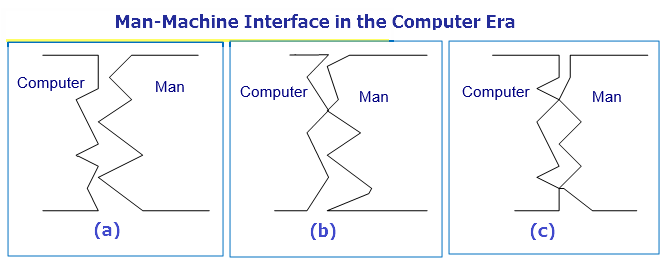
As there is no standard 'software machine', there is no standard man machine interface. Man has not got familiar or has not adapted to this machine.
If this diagram has not been able to convey enough, we will soon take an analogy of an airplane and a car from the machine era, which will make it amply clear.
I was once discussing this issue with a friend. I said that we fail to use computers effectively because we are quite ignorant about computers. We do not have enough computer awareness. His immediately response was, "Why do I need to know about computers in order to use it? You are asking for too much from the users. When I travel by airplane, I do not know how it works. I do not know its internals or its aerodynamic principles but I can still make full use of the airplane to the best of my advantage. I may not know how my car works. But that does not stop me from getting the most out of my car. Then why do I need to know about computers to effectively use it? Why is the computer so demanding?"
His argument sounds very logical and justified on the face of it. But there is a flaw.
The argument that we do not know anything about airplane or motor car is not really true. We know far more about them than we know about computers. The funny thing is that we are not even aware of what we know about airplanes and cars and what we do not know about computers.
We may not know anything about the internals of a car or an airplane, but we certainly are very clear of what is expected of us to use them effectively. We at least know that the airplane cannot be used unless there is a long airstrip and a big open space to take off. We know that however far is the aerodrome, we have to take a taxi and go to the airport to avail of the services of the aircraft.
We know that the aircraft benefits us provided we take the pains to get up early, labor our way to the remote airport, go through the inconvenience of security checks, etc. We know what is our responsibility, we know that the aircraft is not going to pick us up from our residence, that we have to slog our way to the far off airport, we have to check in, etc.
We know that a car can pick us up from our house and take us to the airport, but it cannot take us from Bombay to Delhi in two hours. We know that a car cannot be used effectively unless we build good roads.
We have learnt to benefit from their merits and live with their shortcomings. We are not aware of the pains we take in order to take advantage.
We are so used to the machines now that we immediately know that if we have to go to a distant city, we must use a plane; if we want to go shopping in town, we must take the car. If one doesn't own a car, he should look for the right bus route, should walk up to the bus stop, should stand at the right bus stop and wait till the bus comes however great be his urgency. Or he should walk up till the taxi stand if he can afford it. If we have to deliver a message to a friend a few blocks away, we would rather walk up to the friend than use the car. We are now so used to these machines that we know immediately when to use which machine. We take these decisions subconsciously in split seconds.
Would you call that knowing a lot about cars and aircrafts? Yes. Because in case of computers we do not even have this basic awareness.
In case of computers we do not even know our responsibility. If we were to draw an analogy with computers, what we do is expect the aircraft to reach us to our office a few kilometers away, or sometimes want the scooter to reach us to far away towns. What is worse, we are not ready to even go to the airport and expect the airplane to come to our house and pick us up. If it doesn't, we curse the "aircraft". This leads to frustration. We don't realize that the "aircraft" is not designed for such services. If we expect the service of a car from an airplane, then something is wrong with our expectation. This exactly is the scenario with computers.
7.2.6 Lack of Standard Protocol/Man-Machine Interface

Man does not know that he has to change his methods and practices to effectively use the computer. In other words, man has not been able to design the right interface to computers. He has not been able to evolve the right protocol to use a computer. He does not know what are his obligations.
It is possible to design software and write a book on how to use the software. But no software developer designs the manual interface or writes about it. It is not possible because it differs from organization to organization. So each organization has to design its own manual interface and reinvent the wheel.
It is not uncommon to see computerized systems made which look excellent on the screen, perform all functions but fail miserably on implementation. Most often the reason is that the manual system interfacing with the computerized system was not designed or suitably amended. Same old methods were used on the computerized system, and the same discipline continued as was there in manual system.
Look at the pains we have taken to use technology of the industrial age. We built roads to use cars, air-strip and airports for aircrafts, long rail lines for railways, etc. We built tall transmission towers and insulated wiring to use electricity. Electricity can be very useful, but at the same time it can also kill. When this technology was introduced I am sure there must have been a great deal of resistance to use it. But now we do not complain. We make the safety provisions and use it. There are mishaps when lives are lost. We no more blame the technology for such mishaps. But for software implementation we do nothing. We do not want to do anything nor do we want to change our ways to use the technology of information age. We do not know our responsibility. We only blame the technology if it does not yield results.
We have got a new tool but our methods are the same old ones. I will take a real life example to illustrate this. The case is of a very simple application like payroll, which most companies start their computerization with.
One business unit of a company I once worked with was in oil exploration business. It had rig sites at remote locations where only mode of communication was wireless and radio telex.
The accounts clerk prepared the salary manually. He used to get data related to attendance and other employee details from sites directly on wireless. Most often, the attendance came piecemeal one by one from sites. Sometimes, having sent the data, the sites would send in amendments quite late. Sometimes they never sent the data or the data sent was incomplete or unclear, and the accounts clerk used to call up the sites on wireless to get data or clarifications.
In the manual system, this did not create major problems as, in the worst case, salaries of a few employees were held up due to non receipt of data, or lack of clarity. Most of employees got their salaries on time.
When I joined them, the system had just been computerized. Now accounts clerk gave the data to the computer operator (who incidentally was in IT department. Distributed end user computing was the buzzword then, so the computer had been shifted to the user department, but so had been the computer operator! ). In the new set up, the same old practices continued: data used to come piecemeal, there were last moment corrections by sites, some data was not available (particularly for the new recruits) for which the accounts clerk called up the sites on wireless. Salary processing essentially being a batch process, used to be run and re-run several times due to last minute changes. In a manual system it was easy to correct individual cases where corrections came in, whereas in the computerized system, all salaries had to be processed together. So even if one employee's data was not available, everybody's salary was stuck. Even if one employee's particulars were changed, the salary had to be reprocessed. As a result, all employees started getting salaries late. There was a big hue and cry. There were complaints from sites that they were not getting their salaries on time. Very senior people spent time meeting and trying to analyze the cause for the delays. All that only resulted in the cut off date for attendance getting advanced to 20th of the month! Still complaints from sites did not stop.
Nobody knew who was to blame - the sites, the accounts department or IT department. Naturally as most often happens, in such a situation, the blame fell on IT and their computerized system. Everything was fine before the computerized system, so naturally the system was the culprit.
I could easily see that this was a case of old methods being used with new tools. I will cut a long story short and describe here how the methods, procedures, responsibilities and discipline were changed to adapt to the new system:
1. Personnel department was made responsible for providing and ensuring the accuracy of all attendance data and employee additions/changes. They would give a signed paper.
2. Personnel department was instructed to give the monthly data by a cut-off date. It was made clear to them and all site employees that any changes in data coming after the cut-off date will be incorporated in the next month.
3. Accounts department was made responsible for providing and ensuring the accuracy of all financial data like loans and advances/recoveries.
4. I, as a part of the IT department took full responsibility of the accuracy of computer programs - that given the correct inputs, the programs would process the payroll correctly.
Immediate effect was that salary preparation which was earlier taking more than 10 days was now taking 3 days, with scope for further improvement. No longer did the accounts clerk have to make last minute calls on the wireless, no longer did sites insist on last minute changes. This is a simple example where the system was made successful not by changing the system, but by changing the manual interface.
8. DEMANDS OF THE NEW SOFTWARE PARADIGM
In the example which we discussed in the previous section, it will be interesting to analyze what the users of Information Technology gave in order to get the benefits which they got from successful computerization. What they gave was their willingness to change their expectations and their thinking. They were ready to postpone the effect of last minute changes to next month. They changed their behavior and style of working. They were willing to own responsibility and be accountable. They changed their attitude to work - no longer was there a casual way of giving data. They realized that giving accurate and timely data was most important.
Apart from these, this technology demands something more from the user for effective use. Apart from changes in behavior, attitudes, expectations, thinking, etc., there are certain responsibilities to be shouldered when the computerized application software is developed, customized and implemented.
In a computerized system, you would need to think in advance what you want, give details specifications so that there are minimum changes after programming or customization. In a manual operation, you would start and keep instructing your clerks to change methods wherever you notice a flaw. They themselves are also capable of making improvements in their own methods.
As testing is difficult and modification is easy, one small change in the program renders the product untested and needs re-testing because it is not very easy to see what will be the effect of the change on the rest of the program. By avoiding changes after programming you would avoid risk of malfunctioning caused by tampering a tested program.
You would need to give a detailed set of instructions, called program, absolutely error free in all respects. The instructions should have correct syntax and should have the right order so as to give the desired output until the last dot.
Once the system is in use, you need to give the data together and timely, as we saw in our example of payroll system. You need to change the working environment and the style. You need to reallocate duties. Whereas initially the emphasis was on the accuracy of posting, calculating, now the emphasis has to be on the accuracy of coding, timeliness of input data and daily checking the accuracy based on some control checks. Whereas manually you kept on posting and left the checking work to the end of the year, here you need to check the accuracy daily to ensure no work at year-end.
Computers demand that you change your working style, your thinking. In short, you need to change your 'Industrial culture' to 'Information culture'.
Is this asking for too much? Common perception is that computer technology asks for too much from its users. But do we realize that even other technology which we have put to effective use asks for too much and we have given it - for instance, airstrips for aircraft, roads for cars, rail lines for railway, tall transmission towers and fail-safe insulation for electricity, etc. It is only when we do so much that this technology helps us, not otherwise.
9. CONCLUSION
The problem of acceptance of computers is evolutionary. Man will evolve out of it. The evolution can be faster, the faster we correct our outlook.
We need to look at computers in the right perspective. We have to give up old methods and approach of dealing with machines and adopt new ones. We must recognize computer as an entity different from a machine, and devise altogether new and fresh methods of dealing with its introduction in our lives. In other words we have to evolve an entirely new approach towards computers, probably by first unlearning what we learnt in the industrial age.
Our encounters with computers will be far less frustrating if we appreciate the following:
Software is the machine and not the computer.
Do not expect the same result as a normal machine. Keep in mind that the software is not the same kind of machine that we know of and are so familiar with. Do not expect it to be similar to other machines. Expectation leads to frustration.
Acknowledge that computer and software are far inferior to humans, whereas the machines outperform the humans in the physical activity. Once we are clear of this fact, we will stop expecting the moon.
Acknowledge that man has changed his life style to take maximum advantage of the machines. He has got adjusted or adopted. Ask yourself what do I need to do to make the maximum of the Computer technology.
Most important of all, acknowledge that humanity and the world is in a state of flux. It is in the process of change and a change is always unsettling. Soon standards will emerge or evolve and water will settle. The world is going through the turmoil of change from Industrial age to Information age. The Industrial revolution had its own upheavals, doubts and problems. We are now going through the same phase of skepticism, criticism and doubts with respect to the Information Age. Soon we will know what to give in order to get the most of computers. Soon we will stop complaining about giving what we have to give, as the benefits of what you get will be obvious - as clear as the benefits of electricity.
Related Readings:
More Articles on Psychology of Change
Also See:
![]() My Blog
On God & Religion On
Computer Tech
Home
My Blog
On God & Religion On
Computer Tech
Home
Photos courtesy FreeFoto.com
